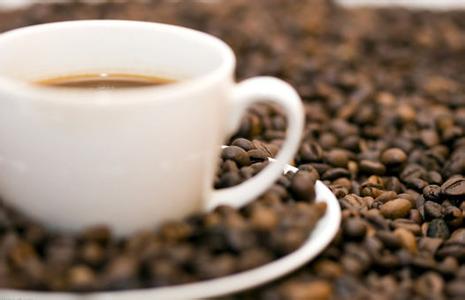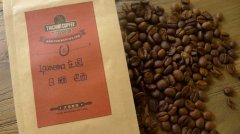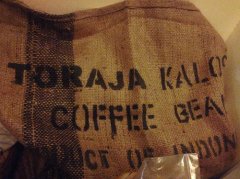A brief introduction to Blue Mountain Coffee
Blue Mountain Coffee has a mellow taste, moderate acidity, sweetness and bitterness, and exudes an attractive elegance.

The area of the island of Jamaica is small, and the Blue Mountains are located northeast of the capital, Kingston, because the mountain is surrounded by the Caribbean Sea. Whenever the weather is clear, the sun shines directly on the blue sea, and the peaks reflect the bright blue light of the sea. Hence the name. The highest peak of the Blue Mountains, which is 2256 meters above sea level, is the highest peak in the Caribbean and a famous tourist attraction. Located in the coffee belt, with fertile volcanic soil, fresh air, no pollution, humid climate, foggy and rainy all the year round (with an average precipitation of 1980 mm and a temperature of about 27 degrees), this climate has created the world-famous Jamaican Blue Mountain Coffee and the highest price coffee in the world.
In 1717, King Louis XV of France ordered coffee to be grown in Jamaica, and in the mid-1920 s, the Governor of Jamaica, Nicholas. Sir NicholasLawes imported Arabica seeds from Martinique and began to plant them in the St.Andrew area. To this day, St. Andrews is still one of the three major producers of Jamaican Blue Mountain Coffee, with the other two producing areas: Portland (Portland) and St. Thomas (St.Thomas). In eight years, Jamaica exported more than 375 tons of pure coffee.
In 1932, coffee production reached its peak and more than 15000 tons of coffee was harvested. In 1950, the Government of Jamaica established the Jamaica Coffee Industry Committee (theJamaicaCoffeeIndustryBoard), which sets quality standards for Jamaican coffee and oversees the implementation of quality standards to ensure the quality of Jamaican coffee. The Commission awarded special official seals to raw and roasted coffee exported from Jamaica, which is the highest-level national coffee institution in the world. At present, there are six kinds of marks that can represent the origin of Blue Mountain Coffee, such as Mafis River Embankment Central Factory (M.B.C.E), Blue Mountain Coffee Cooperative Factory (M.H.C.C.T.), Portland Blue Mountain Coffee Cooperative Factory (P.X.X.S.H.), Coffee Industry Association (Wallenford), Coffee Industry Association (St. John's Peak) and J.A.S. By 1969, the situation had improved because the use of Japanese loans had improved the quality of production, thus ensuring the market. By now, this kind of coffee has reached the point of being feverishly loved. By 1981, about 1500 hectares of land in Jamaica had been reclaimed for coffee cultivation, followed by the opening of another 6000 hectares of coffee land.
In fact, today's Blue Mountain area is a small area with a planting area of only 6000 hectares, and it is impossible to grow all the coffee marked "Blue Mountain" there. Another 12000 hectares are used to grow two other types of coffee: Alpine Top Coffee and Jamaican Superior Coffee.
Important Notice :
前街咖啡 FrontStreet Coffee has moved to new addredd:
FrontStreet Coffee Address: 315,Donghua East Road,GuangZhou
Tel:020 38364473
- Prev

Ipanema, Brazil Sweet Sun Beans
Coffee fruit is commonly processed in two ways, known as sun-dried beans and washed beans, and the beans of Ipanema Manor are called sweet sun-dried beans. It is said that their sun-dried beans are not only dried on the vine with the belt pulp, but also dried in the sun on the tree. It is also a relatively different sun-dried treatment, and the fruit is sweeter and more fragrant.
- Next

Indonesian coffee bean Sulawesitraya (Sulawesi Toraja Kalos)
Indonesia's world-famous boutique coffee is mainly produced by three islands, Sumatra, Java, and this time we got the island of Sulawesi. Sulawesi is the largest island in Indonesia. Sulawesi is a former Dutch colony whose original name was Celebes. The Toraja producing area on the island of Sulawesi is more famous. Traya
Related
- Guji coffee producing area of Guji, Ethiopia: Humbela, Shakiso, Wulaga
- What is the most expensive variety of Qiloso in BOP multi-variety group?
- How to store the coffee beans bought home?
- Why are Yemeni coffee beans so rare now?
- Ethiopian Sidamo all Red Fruit Sun Sun Santa Vini Coffee beans
- SOE is mostly sour? What does it mean? Is it a single bean? what's the difference between it and Italian blending?
- Is Italian coffee beans suitable for making hand-brewed coffee?
- How to choose coffee beans when making cold coffee? What kind of coffee beans are suitable for making cold coffee?
- Just entered the pit to make coffee, what kind of coffee beans should be chosen?
- Can only Japan buy real Blue Mountain Coffee? What are authentic Jamaican Blue Mountain coffee beans?

